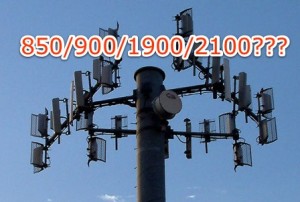Justification is that only a 5 MHz channel bandwidth is defined for UMTS FDD; this restriction may limit the deployment of UMTS in the case when the spectrum allocation is less than 5 MHz, or not a multiple of 5 MHz. An example of such a case is when frequency resources are re-farmed from legacy systems.

A new 3GPP study item studied a proposal on time-dilated UMTS as a means of transmitting in smaller bandwidths as one possible technology for replacement for GSM/GPRS/EDGE in these bandwidths.
The study item has studied a proposal on time-dilated UMTS as a means of transmitting in smaller bandwidths as as one possible technology an alternative to LTE for replacement for GSM/GPRS/EDGE in these bandwidths.
The study on Scalable UMTS FDD bandwidth focused on the following deployment scenarios:
Standalone
- Bandwidths with scale factors N=2 (2.5 MHz) and 4 (1.25 MHz) were considered with the N=4 case being considered only for HS data traffic.
Multi-carrier
- Carrier aggregation with an UMTS carrier was also considered where the secondary carrier was either N=2 or N=4; i.e. a total of 7.5MHz or 6 MHz of bandwidth
The following solutions for Scalable UMTS were proposed:
Time Dilation
In this solution, the UMTS chip rate is scaled by a factor of N which results in a smaller bandwidth. The TTI length increases by a factor of N as a result while other aspects such as number of HARQ processes, retransmissions, coding, etc. are unchanged. Time dilated UMTS aims to improve performance by increasing latency.
Scalable UMTS by Filtering
This solution achieves a lower bandwidth by modifying the RRC filter to match the target bandwidth. All other aspects of the UMTS transmit and receive chains were unchanged. Scalable UMTS by filtering experiences larger Inter Symbol Interference than normal UMTS.
Scalable UMTS by filtering and chip zeroing / Spreading factor dilation
This solution mitigates the inter symbol interference experienced with filtered UMTS, by zeroing all chips except every Nth chip of the 3.84Mcps UMTS signal. Thus, the solution reduces the size of the OVSF code tree by a factor N
In the standalone case, if an operator has a 5MHz UMTS carrier available that is not fully loaded, it is better to map users to the 5MHz carrier, since the users will experience better throughput on 5MHz than 2.5MHz.
Read more about Scalable UMTS (3GPP Study Item) from this document.

Permalink